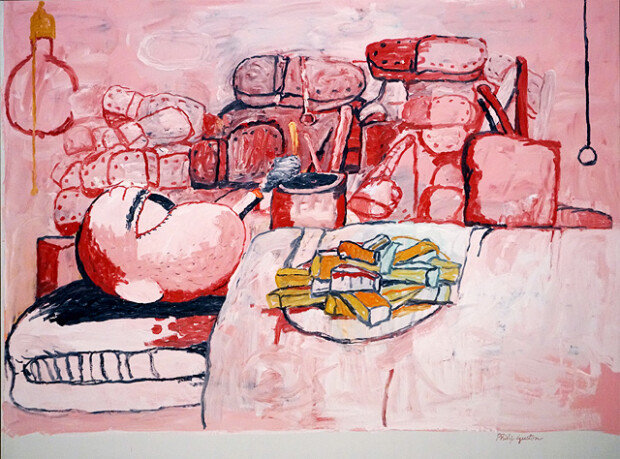Impure self-portrait
Impure self-portrait
Posted October. 08, 2020 08:01,
Updated October. 08, 2020 08:01

A man with a bean-shaped head is smoking in bed with the duvet up to his neck and a plate of French fries on his chest. There are piles of shoes and a brush container at the back as well as a light bulb that is turned off. This cartoonish painting is a self-portrait of 60-year-old Philip Guston, a leading American Abstract Impressionist. What made an Impressionist draw this odd portrait of himself?
Guston was born in 1913 to a migrant Ukrainian-Jewish family and grew up in Los Angeles. His father’s suicide, which he witnessed as a little boy, and activities of white supremacy group “KKK,” had a huge impact on his works and life. He earned a reputation for large murals that depict racism, violence and fascism early in his career and led Abstract Impressionism with Jackson Pollock in the 1950s before he suddenly turned to Representation in 1968. His paintings looked strange and childish full of mysterious subjects such as light bulbs, shoes, cigarettes and KKK members with bandanas.
When his new works were released in the 1970s, they faced criticism and became a subject of mockery. People said his works were not art and he was not in his right mind. Ostracized by the art world, Guston comforted himself with cigarettes and food to deal with a sense of loneliness and of loss. This was when he started overeating and having three packs of cigarettes a day. One big eye, a missing nose, a closed ear, shoes that symbolize the Holocaust and brushes stuck in a container upside down show how unstable, lethargic and tragic he felt at the time.
There was a reason why he steered away from Impressionism. At the time, anti-Vietnam War protests were taking place and the impact of May 68 could be felt in the United States. He may have become weak, but his heart was still full of passion. Guston believed paintings were impure and aimed at drawing Representational paintings, which use narrative and satire to criticize U.S. society and himself, a member of the society, as opposed to Impressionist paintings that emphasize purity.







